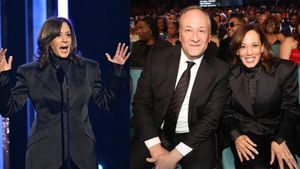The 2024 U.S. Presidential Election kicked off with more than the usual twists and turns, leaving many shocked by outcomes nobody quite predicted. From unexpected withdrawals to explosive events rippling through the political sphere, this election has been anything but ordinary.
One of the primary drivers of the chaos is the incumbent nominee’s unforeseen exit from the race, coupled with attempts on candidates' lives. Despite all the uncertainty lurking over the campaign, one thing is evident: reliable forecasts and tools for prediction are more valuable than ever. The election betting markets emerged as unlikely heroes, showcasing their prowess and accuracy.
Unlike the traditional polling methods, which stumbled and often misrepresented public sentiment, platforms like Polymarket and Kalshi managed to provide insightful predictions about the races. These election betting markets showcased the power of real-time information, successfully predicting the eventual winner much earlier than the conventional polls could deliver.
Many observers, including political analysts, had their eyes glued to the prediction markets. When election day arrived, the markets indicated Donald Trump had approximately a 20% greater chance of securing victory over Kamala Harris. Interestingly, they didn’t just stop at predictions; they accurately forecasted key battleground states, including Pennsylvania, North Carolina, and Nevada, all of which Trump managed to clinch.
On the contrary, traditional polling methods fell short. While pundits voiced their forecasts, they failed to follow the pulse of the electorate accurately. Nate Silver, known for his insightful predictions, incorrectly rated the contest as being evenly matched. His last forecast hinted at Harris edging out Trump. Meanwhile, FiveThirtyEight and The Economist also indicated the race was exceptionally close, mirroring Silver's statistics.
Polling aggregators, such as RealClearPolitics, shared similar sentiments, noting neither candidate appeared to have strong support across seven battleground states. Some established pollsters even placed Harris at three points ahead by the closing weekend of the race. This assumption quickly went up in flames when Trump decisively took Iowa by 14 percentage points—a staggering victory.
Historically, this isn't the first time betting markets have outshone traditional polling methods. The guidance of U.S. political betting has influenced electoral sentiment for well over a century. Even back during the 1916 election, long before the internet created our current political climate, betting markets were seen as more reliable than polling.
Market insights certainly painted a clearer picture than the muddied waters of public opinion polling. Voters should be cautious about existing traditional methods, as they proved to miscalculate the electoral sentiment precisely where it counted. Many pundits attempted to hedge their predictions, yet were often caught off guard as the election progressed.
The reality is clear: Americans might be more discerning if they began to follow betting markets rather than rely on faltering traditional forms. With these markets’ unexpected reliability, they remain valuable tools for predicting electoral outcomes.
Polling has struggled and often left voters confused; by following betting markets, clearer insights emerged on the political horizon. Even with statistics hinting at tight races, Americans found themselves guided by the more accurate odds provided by betting markets when assessing their candidates.
This kind of forecasting wasn’t just seen as the underdog; it now stands as potentially the gold standard for candidate evaluations leading up to future elections. It may well force adjustments, both among political advisors and the strategists who set the stage for future races.
The events of the 2024 election carry forward lessons on predictions, demonstrating how fluctuated odds can function as reliable indicators of public sentiment. Now, as political analysts deconstruct the chaos of this election, the role of betting markets will undoubtedly come under intense scrutiny. They have repeatedly proven they can adapt to the electorate's unpredictable behavior far quicker than static polling methodologies.
Looking forward, will the traditional polls adapt to this new norm? The performance of betting markets may encourage reevaluations across the political spectrum as parties and candidates look to accurately gauge voter sentiment. Fueled by timely betting information, campaigns may begin incorporating these forecasts, blending instinctive political intuition with analytical insights from these markets.
With elections becoming more unorthodox and contentious, one thing remains clear: the tools and metrics will need to be updated and reevaluated accordingly. Political institutions will be wise to incorporate more unconventional sources, especially if they want to stay relevant and truly understand the shifting sands of voter opinion.
So, where does this leave us as we move past 2024? Political observers will undoubtedly keep their eyes peeled and perhaps start tuning their attention to markets rather than polls, wary of how easily the winds of political fortune can shift. The outcome may well define future election strategies, as resources are reallocated to keep pace with the rapidly changing political landscapes fueled by the growing influence of betting markets.
All said and done, embracing the unexpected lessons of 2024 will be key for parties hoping to remain competitive. Insight from reliable forecasting sources will guide the future, even amid the unpredictability of election season. The intersection of expertise and intuition might just chart the course for political strategy moving forward.



